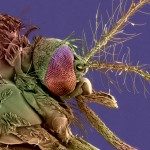Link to Pubmed [PMID] – 18620510
Vector Borne Zoonotic Dis. 2008 Dec;8(6):749-53
We evaluated the ability of three mosquito species (Aedes caspius, Aedes detritus, Culex pipiens), collected in southern France and Tunisia, and of different laboratory-established colonies (Aedes aegypti, Aedes albopictus, Aedes vexans, Anopheles gambiae, Culex pipiens, Culex quinquefasciatus) to disseminate two strains of Rift Valley fever virus (RVFV), the virulent ZH548 and the avirulent Clone 13. After feeding on an infectious blood meal at 10(8.5) plaque-forming units/mL, females were maintained at 30 degrees C for 14 days. Surviving females were tested for the presence of virus on head squashes. Disseminated infection rate corresponds to the number of females with disseminated infection among surviving females. Among field-collected mosquitoes, Cx. pipiens was the most susceptible species with disseminated infection rates ranging from 3.9% to 9.1% for French strains and up to 14.7% for Tunisian strains. Among laboratory-established colonies, Ae. aegypti from Tahiti exhibited the highest disseminated infection rates: 90% when infected with ZH548 and 72.6% with Clone 13. The presence of competent Cx. pipiens in southern France and Tunisia indicates the potential for RVFV epizootics to occur if the virus was introduced into countries of the Mediterranean basin.
